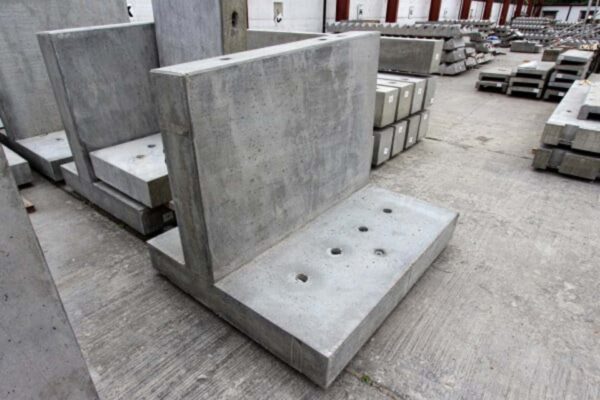Structures Failures in civil engineering are a major concern for engineers as this leads to huge loss of property but, more critically, poses serious risks to the safety and welfare of the people.
Civil engineers strive to design and construct structures that are safe, durable, and efficient. However, structural failures can occur due to various factors, leading to catastrophic consequences. Understanding the types of structural failures in civil engineering is crucial for preventing such incidents and ensuring public safety.
Civil engineering projects can be extremely complex, involving the coordination of many different components.
Despite engineers’ best efforts, sometimes things still go wrong, leading to construction failures in civil engineering.
Understanding why these failures occur can help prevent them in the future.
There are several common types of failures in engineering. Some of the main structural failure types include excessive deformation, instability, fatigue cracking, fracture, and buckling.
The root causes behind these failures typically relate to issues with design, materials, workmanship, or maintenance.
As these play a vital role in the field, an engineer must be well-versed with the main root causes for these failures beforehand in order to avoid unanticipated problems in future.
There are many reasons for the structural failures which include technical mistakes while designing, construction flaws, poor workmanship, materials quality and quantity, environmental factors, unexpected loads due to natural forces and unforeseen circumstances.
Understanding why and how civil engineering structures like bridges, dams, and buildings fail is critical knowledge for civil engineers.
By studying different modes and mechanisms of failure, steps can be taken in design, construction, operation and maintenance to prevent catastrophic collapses and limit failures.
This comprehensive overview covers the major types of failure that can occur in structural engineering, their characteristic causes, effects, and prevention methods.

Overview of Structural Failures
They occur when components of a built structure are unable to support applied design loads and engineering stresses. This occurs when:
- Applied loads exceed the structure’s load-bearing capacity and strength
- Design flaws lead to instability or stress concentrations
- Construction defects reduce the built structure’s strength
- Materials fail or deteriorate below their assumed capacity
- Unanticipated loading conditions are not accounted for
Failures range from small-scale fracturing all the way to total collapse. Understanding failure modes is key to failure prevention. In this article, let’s have a brief discussion for the causes, effects and also prevention of these failures of the structures.
types of structure failure
Failure analysis in civil engineering aims to identify the modes and mechanisms that lead to failures.
The types of building failures can be categorized into different types of failure in structure, such as buckling, fatigue, fracture, and excessive deformation. Understanding these types of failure engineering mechanisms is essential for developing effective mitigation strategies and enhancing structural safety.
Some of the key types of failure analysis in civil engineering look at materials, structures, foundations, and construction methods. Common techniques include visual inspection, mathematical modeling, testing procedures, and forensic investigation.
Structures may fail in different ways depending on their design. For buildings, common structural failure types include failures in civil engineering like foundation problems, column buckling, beam cracking, and connection issues.
Bridges can fail due to vehicle impact, support settlement, cable breakage, and resonance. Dams typically fail because of overtopping, seepage issues, sliding, or liquefaction.
Looking closer, there are four main types of structural failure. The first is tensile failure, which occurs when forces pull material apart.
Next, compressive failure happens when excessive pressure squashes material. The third type is shear failure; this is when parallel internal forces cause deformation along a plane.
Finally, flexural failure refers to bending stress deforming or breaking material. Identifying the specific structural failure mode is key for effective failure analysis.
Common Modes of Structural Failure
1. Tension Failure
Tension forces stretch and pull apart structural members. Excessive tensile stress can cause:
- Yielding when a ductile material reaches its tensile strength limit
- Fracture when a brittle material cracks before yielding
Tension failure can occur in concrete reinforcing bars, steel cables, masonry anchors, and structural fasteners.
2. Compression Failure
Excessive compressive stresses that squash or crush a material may lead to:
- Crinkling, buckling or folding in ductile materials
- Fracturing and shattering in brittle materials
Columns, bracing members, concrete, and masonry often experience compression failures.

3. Shear Failure
Shear forces cause adjacent parts of a material to slide relative to each other. This can lead to:
- Yielding in ductile materials when shear strength is exceeded
- Brittle shear cracking in concrete and timber
Reinforced concrete beams, connectors, and shear walls commonly suffer shear failures.
4. Flexural Failure
Bending forces induce tension on one part of a beam and compression on the other. Excessive bending causes:
- Yielding of ductile beams as their plastic moment is exceeded
- Breakage of brittle beams as the tensile concrete cracks
Flexural failures are most prevalent in reinforced concrete beams and slabs.
5. Torsional Failure
Excessive twisting forces along a member’s length lead to:
- Ductile members yielding by reaching their torsional moment limit
- Brittle members fracturing due to shear and tension stresses
Torsional failures are rare but can impact long spanned beams or oddly shaped components.

6. Buckling Failure
Members subjected to high compressive loads may suddenly buckle and bend sideways if stability limits are exceeded.
Slender columns, struts, beams, braces, and plates are susceptible to buckling failures.
7. Fatigue Failure
Repeated cyclic stresses well below the static strength limit can grow cracks that gradually propagate over time, eventually fracturing a member.
Bridges, cranes, railways, and engine components commonly exhibit metal fatigue failures.
8. Impact Failure
Sudden high-intensity impulse loads from impacts can overwhelm the strength capacity of materials and connections, causing immediate damage.
Collision damage to columns, wall failures from falling debris, and breaching of water tanks are examples of impact failures.
Preventing Structural Failures
While outright prevention of any failure is idealistic, steps can be taken to minimize failure risks:
- Use conservative safety factors in design for higher reliability
- Specify higher grade materials with lower variability
- Perform advanced analysis like FEA to identify weak points
- Design redundancies and alternate load paths as backups
- Simplify designs to reduce components and complexity
- Follow best practices and standards for detailing and construction
- Implement rigorous quality control and testing
- Regularly inspect and maintain structures
- Upgrade aged structures to meet modern code requirements
Failures provide invaluable real-world lessons. Thorough forensic engineering investigation of failures should inform continuous improvement of design codes, standards, materials, construction methods, and safety factors.
Some famous real-world examples that illustrate structural failures include the Quebec Bridge collapse in 1907.
The Hyatt Regency walkway collapse in 1981, the Savar building collapse in 2013.
The Florida International University pedestrian bridge collapse in 2018. In-depth investigations into these structural engineering failures revealed crucial causes of structural failure.
Whether relating to faulty design, inadequate construction oversight, or a dangerous combination of factors.
By continually assessing vulnerabilities and learning from past disasters, civil engineers hope to enhance standards and prevent catastrophic structure failure examples in the future.
Though eliminating failures completely may not be possible, ongoing analysis provides vital insights that can drastically civil engineering failure rates over time.
This ultimately leads to safer and more resilient infrastructure that reduces risks to human life.
By making structural failures a learning opportunity, civil engineers can evolve best practices and gradually improve structural reliability over time.
Robust safety margins and redundancy provide resilience against the inevitability of the unknown.
Conclusion
Understanding how structures fail is instrumental knowledge for civil engineers seeking to advance the structural design discipline.
By continuously studying and learning from past structural failures, the civil engineering community can enhance its knowledge, refine design codes, and implement stricter quality control measures, ultimately reducing the risk of catastrophic incidents and safeguarding lives and infrastructure.
While outright prevention of failure remains impossible, engineers must continue pursuing the goal through physics-based analysis, prudence, simplicity, proper construction, active maintenance, and safety margins.
As devastating as failures are, they provide invaluable technical lessons to improve the built environment.






